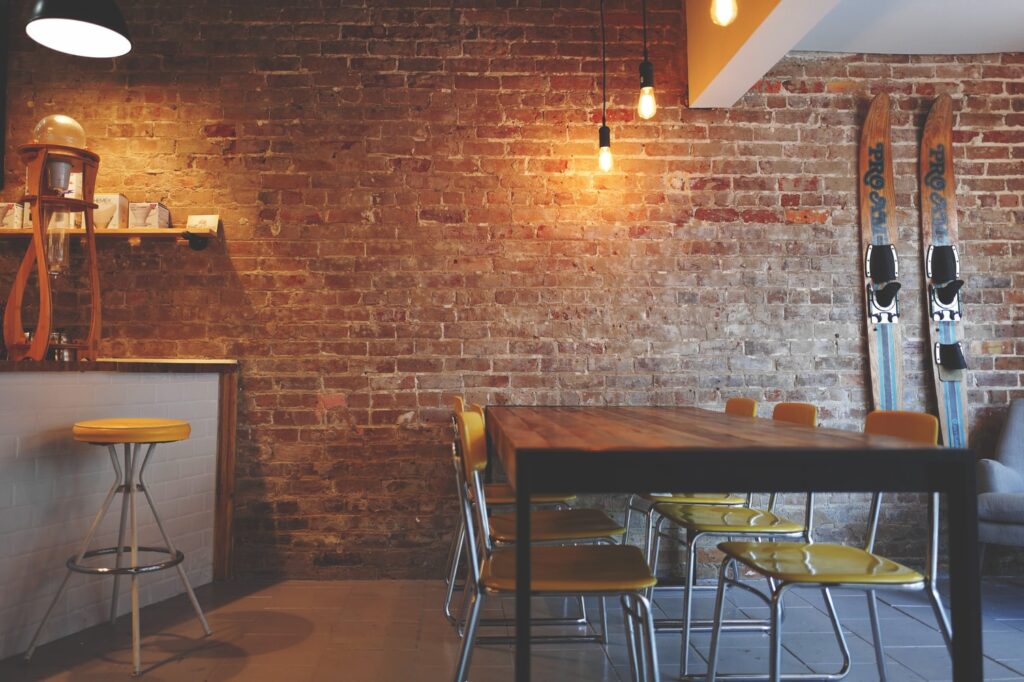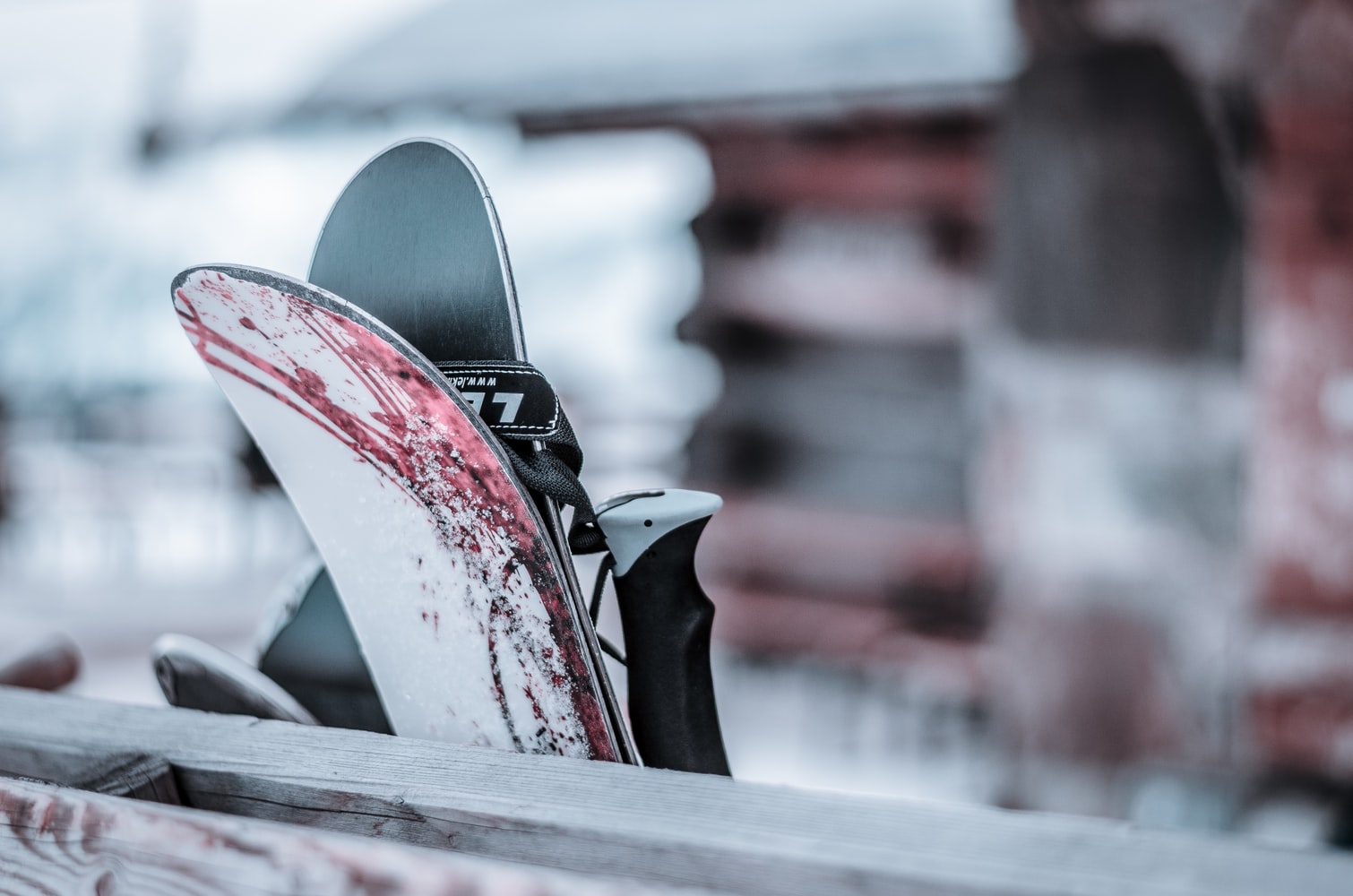Skiing is a very popular past time and can be incredibly rewarding, but unless you live on a permanently snow-covered mountain, you will have to put your skis away for certain periods of the year. Luckily, building a ski rack in your garage is easy with a few simple tools, and doing so will help preserve your skis for longer.
There are many different styles of ski racks, from wall mounted pegs to standalone pillars with slots to everything in between. However, this guide will show you what I believe is the easiest and cheapest way to build a ski rack that will also have room for your own personal touches.
Table of Contents
Getting Your Tools and Space Ready
As with any DIY project, setup is vital to ensure your safety and a successful project. Much of the labor for this project, as with many woodworking projects, is greatly mitigated through the use of power tools.
However, for the sake of accessibility, this guide will revolve primarily around the use of hand tools. Additionally, an important thing to keep in mind is that this supplies list may differ depending on how many skis you want to store. I will cover this more as we get into the build. For three pairs of skis, you will need this.
- 1×6” board (at least 28” long)
- 1×4” board (at least 26” long)
- (or a 2×6 board instead of the 1×6 and 1×4)
- 1 1/8” round wooden dowels (48” is ideal for this build)
- A drill
- 1 1/8” paddle bit
- Countersink bit
- 3” wood screws
- Wood glue
- Pencil
- Safety Glasses
- Ear Protection
- Stud Finder
- Hand Saw (or other saw if you have one)
The choice between a 1×6” and 1×4” or a 2×6” board is up to you. Later on, the 1×4” will be cut to have a 1” offset from the 1×6” board, and then mounted on top of the 1×6.” This will be to add some additional support to your dowels later on.
But, you can forgo this by using a 2×6” that will add that additional depth needed for the dowels. That covers what you will definitely need, but if you want to add a little more to the look and overall stability of your rack, then you can also add these optional parts.
Prep Your Work Space

Now that you have the necessary supplies, it is time to set up your space. If you have not done this already, now is the time to pick out a spot on your wall where you want to hang your skis.
Keep in mind that the skis will be hanging down from wherever you pick, so make sure you pick somewhere with enough clearance from the floor for your skis to hang. This also means that you will need to clear the space below your chosen spot of junk or other items.
Additionally, make sure to consider that this project will be 28” wide unless you choose otherwise and that you will need to mount your rack onto the studs of your wall.
Measuring and Finding Studs
Studs are usually 16 or 24 inches apart. Depending on how long you plan on making your rack, this might affect your placement. Ideally, you want your rack to spread the length of at least two studs, which is why this guide is for a 28” rack.
If you cannot manage to place it over two studs due to space or the size of your rack, then you will later need to mark your wood in the center and use drywall anchors to help support the weight.
Now that we know what size we are looking for, we can start finding the studs. The easiest way to do this is with a stud finder, which can be found at any local hardware store or online. Using this style of the stud finder is very simple and will save you a lot of time in the long run.
Your stud finder should come with instructions, but here is a video tutorial as well. Once you have found the studs you are going to use to mount your board, mark them with a pencil. Make sure to mark both the outer edges of your studs so that later you know where to screw.
The last thing for setting up your space is making sure you can move around safely without tripping or knocking things over. With that, we can now move on to the wood.
How to Make the Actual Rack
Now that you have your tools ready and your space is ready for action, you can get started on the actual construction of the rack.
Measure and Mark the Wood
Before you can start cutting anything or screwing, you will need to mark up your wood in a few places. To start, you will need to decide how long your rack will be. Whatever length that maybe, 28” in this guide’s case, cut your 1×6 board to that length using whatever saw you have available to make a clean cut. Suppose you are going the 2×6 board route, cut that instead.
Now that you have your wood cut to size, measure where the studs will be on the board. Keep in mind whether your studs are 16” or 24” apart or if you are only mounting on one stud. This will affect where you mark.
Also, make sure that when marking your board to denote both outer edges of your studs like you did on the wall. Make sure to mark two countersink holes per stud.
Cutting the Dowels to Size

How many dowels you need will vary depending on how long your mount will be and how many pairs you plan on making. However, the ideal size to cut these dowels to is 8”.
This size gives enough room to firmly place the dowels in the holes you will drill later while still leaving 6 ½” of space for your skis. Conveniently, cutting down to 8” will also give you exactly six properly sized dowels if you chose the 48” dowels to start with. With your six dowels, you now have three pairs to place on your board.
Marking the Dowel Holes
To mark where your dowels will go, you need to keep a few things in mind. First, the ideal space to have between the two dowels of each pair is ¾ of an inch.
So, when marking the points on your 1×6, make sure to leave ¾ of an inch between the points, but remember that these points will be the edges of your dowels and not the centers. If you have a compass, make a 1 1/8” mark to show where the edges of your dowel are. If you don’t have one, then you can use the dowel to make the mark.
The second thing you need to keep in mind is the markings you made for your studs. Do not place a dowel where a stud is because it will prevent you from screwing the mount onto the wall.
Lastly, keep your spacing in mind. Leaving enough space between each pair of dowels will allow you to place coat hangers to hang your ski poles, and spacing evenly will help your finished product look its best.
Marking the 1×4 Board

To mark the 1×4 board, you will first need to cut it down to 26”. By doing this, you will later be able to place it on top of your 1×6” board with a one-inch offset. Mark up your 1×4 the same way you did with the previous board making sure to show where your studs are and lining up your dowel hole marks.
Remember to keep in mind that your 1×4 will have a one-inch border all around it. If it will help you make proper marks, measure one inch from each side of the 1×6 and place the 1×4 in this space. If you chose to just use the 2×6,” you do not need to worry about doing this. You are now ready to start drilling.
Drilling Your Holes

The first holes you will want to drill will be the dowel holes. Use your 1 1/8” paddle bit to drill completely through the 1×4 board at your designated spots. Next, drill no more than a quarter-inch into the 1×6 board.
This will provide extra stability to your dowels, but this is not necessary if you do not want to do it. Later we will have additional ways to help support the dowels. Next, stack your 1×4 on top of your 1×6, making sure to line everything up.
Using your countersink bit, drill countersink holes through the top of your 1×4 all the way through your 1×6 at the designated stud points. Clamping your wood down to avoid movement is recommended. If you are using only the 2×6, make sure to not drill your dowel holes deeper than 1 1/4”.
Attaching Everything Together

Before placing your dowel holes in place, you first need to attach your two boards together. To do so, simply spread wood glue on the backside of your 1×4. Make sure to avoid gluing over your pre-drilled holes.
Press the back of the 1×4 onto your 1×6 and wipe off any excess glue that might squeeze out the sides. Clamp your boards together or weigh them down with something to keep them firmly together. Now let them sit for at least an hour.
Now apply wood glue to the inside of your holes and at the end of your dowel. You can use your finger or another applicator to spread it out. Once you have an even coat all around, you can place your dowel into each designated hole.
Ideally, the fit will be a little snug, but if it is not, do not worry. The wood glue will solidify harder than wood, and we will have the opportunity to add additional support later. Again, make sure to wipe off any excess that may squeeze out the sides of the holes and let the dowels sit for an hour.
Optional Support
If you feel that your dowels are still not supported enough after your glue has dried, don’t worry. A great way to add support is to turn your mount around so that you are looking at the backside of the 2×6 board.
At this point, everything should be attached together, so it should all be lined up. Once you are looking at the back of the 2×6, locate where the dowels would be if they were coming out the back of 2×6. Here you can use the countersink bit to drill additional holes.
You can now screw the 2” wood screws through these holes and through the dowel. You should still have a flush backside to place on your wall, and your dowels have additional support.
Optional Ski Pole Hangers

This is a completely optional step, but it is nice to do. If you have coat hangers or purchased some for this build, you can use them as hangers for your ski poles.
Simply screw them to the board in between the pairs of dowels. Now when the board is mounted, you can hang the wrist straps over the hooks and have everything neatly stored together.
Mounting the Board on the Wall
At this point, hopefully, you have everything attached together, and it all lined up perfectly. You should be looking at a finished ski rack except for not having it hung on the wall. Now is the time to do that. Place your rack up on the wall and line it up with the stud marks you made.

Having a level here is very helpful to make sure you are attaching your rack evenly. Once you have your rack lined up, use the 3” wood screws to drill through the pre-drilled countersink holes.
This should result in screws that are flush with your wood and will be embedded an inch into your studs. Once all the screws are in place, you should have a useable ski rack.
To use the rack, simply place the bottom of your skis together and place them between the dowels. The curve at the ends of your skis will not be able to pass through the 3/4” hole. For a nicer fit, there are Velcro straps used to hold skis together.
The length of the dowels should be long enough to hold racing skis, cross country skis, or even wider ones.
Additional Information
At this point, your rack is finished, and your skis can be easily stored. However, if you want to add some additional flair to your rack or see the solution to common issues you might be facing, read on.
Drilling too Far
As stated in the guide, drilling into your 2×6 is not entirely necessary, and if you do, you should not drill more than a quarter-inch in. The reason for this is so that you do not run the risk of making a hole straight through your 2×6.
If you decide to drill your dowels into place, it is very possible that the countersink bit will meet the hole made by your paddle bit. This completely defeats the purpose of drilling your dowels into place since you will only be drilling into the dowel instead of drilling it to something.
If you feel like you drilled your dowel holes too deep into your 2×6, I recommend not drilling your dowels into place.
Alignment
If you decided to use the 2×4 and 2×6, then you will have to attach the 2×4 on top. However, you do not want to line the edges of the 2×4 with the 2×6. Instead, you want to center it.
By cutting it to the designated 26,” you should be able to place it directly in the middle of the 2×6 with a one-inch border. When marking your 2×4, make sure to keep this additional inch in mind.
So, if you marked 4” away from the edge on your 2×6, you will need to mark 3” away from the edge of your 2×4. This will help to keep everything lined up properly.
Finish and Other Customizations

If you want to add a more personal touch to your project, you can add a finish and some paint. To do this step, find a stain or finish that you like and apply it before mounting it onto your wall.
The best time to do this is after everything is attached but before mounting. Doing this can make your project look even more professional.
Another step you can take is chamfering your edges. For this step, it is probably best to do before attaching your dowels or boards together. For those who don’t know, a chamfer is when you make your edges have an angle instead of a straight ninety-degree edge.
There are many different types of chamfer bits, so if you decide to do this, keep in mind that you will need an extra bit or will need to already own a set.
Also, keep in mind that if you decided to stack your 2×4 and 2×6 that chamfering both will affect the way the finished product looks significantly. So, make sure to pick an angle that suits your taste before doing it.



0 Comments